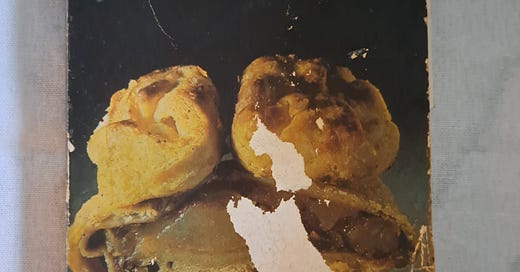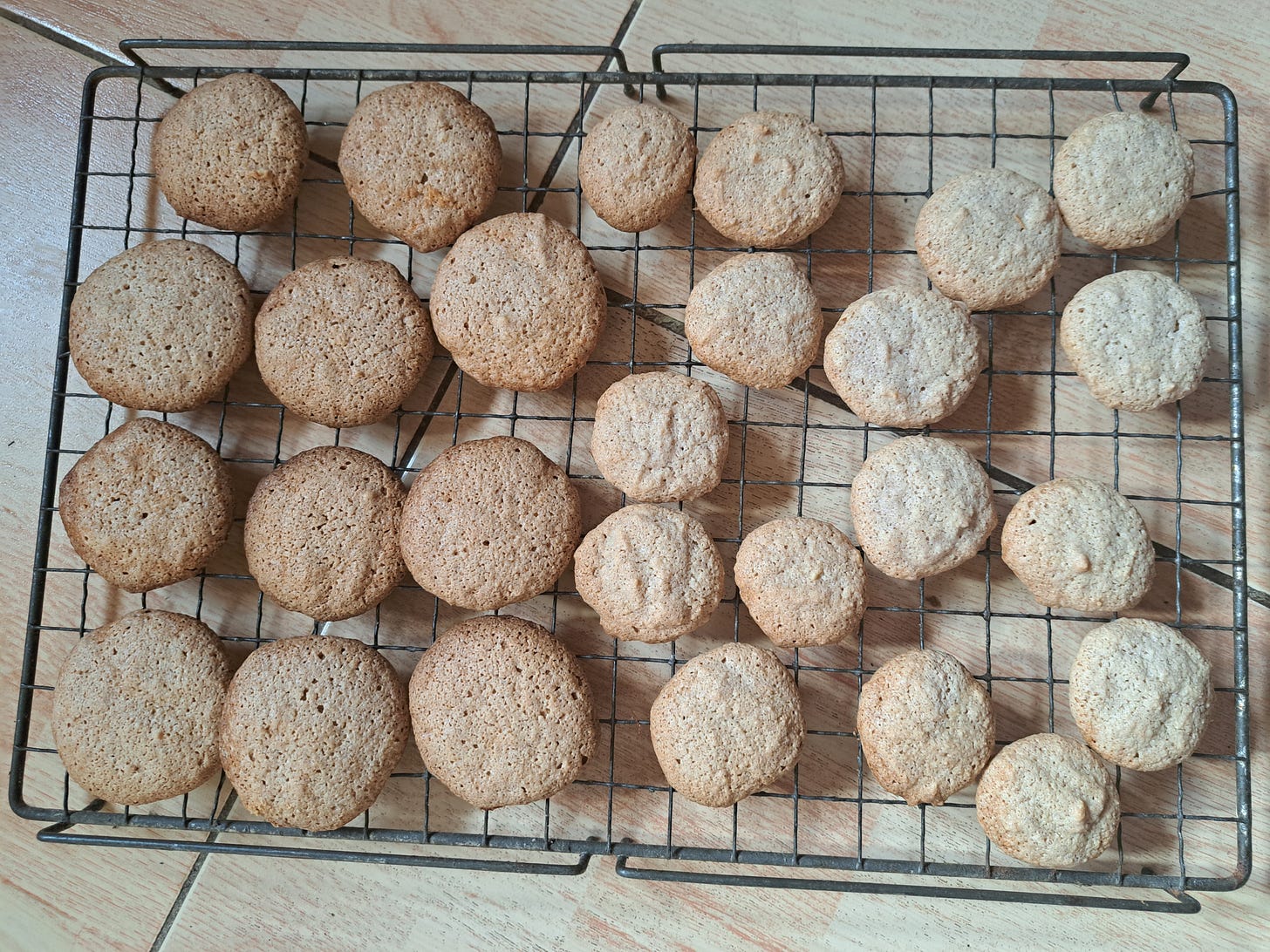Why I never put butter on a bacon sandwich
The complexities of Easter and Passover and a recipe for cinnamon balls that want to be macaroons.
If you’re Jewish it’s likely that you’ve been brought up not to eat meat and dairy together. It was years before I felt brave enough to eat a cheeseburger. Even more years passed before I faced down lasagne, the crust of cheese melting on top, mocking me. The idea of a cheese and ham sandwich made me feel queasy. I’m not without a sense of irony. When a girl at school told me I was the most un-Jewish person she knew I didn’t take it as an insult. Religion wasn’t for me but the food I grew up with is somehow ingrained. At home we didn’t eat kosher food but we’d never have pork or shellfish, or meat and cheese together. We had Christmas, we had Easter Eggs and we had Passover.
I know what a bagel looks like. I can make chopped liver and fry fish balls. If anyone asks how Jewish I am, I’ll say, I don’t put butter on a bacon sandwich.
I’ve never been religious; as a child there were too many questions that weren’t answered to my satisfaction. I’ve happily settled in the middle, being a Humanist/cultural Jew, i.e, I know what a bagel looks like. I can make chopped liver and fry fish balls. If anyone asks how Jewish I am, I’ll say, I don’t put butter on a bacon sandwich.
It’s in Spring that I feel the crossover the most.
Hot cross buns and overdressed Easter eggs have filled the shelves of food shops. Meanwhile in the Jewish aisles, large packets of ground almonds, potato flour, and packets marked Kosher for Passover take precedence on the shelves.
Passover marks the escape of the Israelites from Egypt after the ten plagues. Sometimes Easter collides with Passover, moon phase depending. It should; the last supper was a Passover meal after all. This year, the first night of Passover is 22nd April. Yes, Passover lasts for 8 days. For our family, that meant 8 days of joyfully munching on matzo instead of bread.
At school it was an excuse to skip school lunches and bring our own from home. Gathering with other Jewish children in a cold classroom, we’d peer into each others lunch boxes to see what possible swaps were available. Matzo never made the best sandwiches.
On occasion when mum felt like baking for Passover, we’d come home to find kitchen surfaces covered with sweet treats. Ground almonds and potato flour replaced wheat flour in kitchens. If we were lucky there would be trays of icing sugar covered cinnamon balls and pink and white coconut pyramids.
The religiously observant would have rid their house and kitchen of any leaven (any type of leavened bread or bread product). Some might have a set of tableware only used at Passover. We didn’t take part in any of the hunt the leaven games but we loved the switch over from bread to matzo. Matzo represents unleavened bread; there wasn’t time for the Israelites to finish baking, in their hurry to leave Egypt.
It was a chance for us to make scooby snacks (mazto, butter, marmite, build up, create towers, try to eat, repeat.)
There were a couple of rare occasions when our entire family gathered for the first day of Passover. Then all the symbolic foods would make an appearance. It’s always all about the food.
Boiled eggs served in salt water (delicious) represent tears of the captive Jews.
On the Seder (Passover) plate would be;
Bitter herbs to represent the bitterness of the enslaved lives of the Jewish people. If bitter herbs could be found. Usually a piece of horseradish if it was available.
Charocet. Something we did like. It’s supposed to represent the mortar between the bricks used by the Israelites when building for the Egyptians. It’s a sweet mixture of finely chopped apples mixed with nuts, spiced with cinnamon, bound with sweet wine or sherry.
Something fresh and green like parsley or watercress to represent hope and the future.
A shank bone. Usually this was a piece of burnt lamb bone to represent the sacrifices made. There was usually a struggle to burn it on the stove.
Elijah’s Cup. A silver goblet of wine placed at the end of the table for the prophet Elijah to drink, should he appear. Sometimes, like the mince pie left out for Father Christmas, this glass would miraculously empty itself.
Needless to say I don’t remember any of the Passover story being read out. Children are encouraged to ask questions and when I say children, I mean boys. It’s the youngest boy who gets to say; why is this night not like other nights. Nearly always the male focus despite the fact that it was women who had to clean, cook, set the table, and in most families, look after and dress the children, whilst all the ‘head of the family’ had to do was sit down at the head of the table and preside.
Why is there a cup for Elijah and not one for Miriam? If she’d not placed her little brother Moses in a basket for the Pharaoh’s daughter to find, there wouldn’t have been a Jewish nation. See; always questions.
I’ll skip over the meal; it’s always the same. Chicken soup with vermicelli and kneidlach (matzo ball dumplings.) Roast chicken or poached salmon. Stewed fruit or baked apples. Sometimes there might be almond pudding too.
Here’s the recipe for Cinnamon Balls. I can never get them right, simple as the recipe is. Thinking about it, they’re a variation on a proper almond macaroon. Remember them? BM. Before macarons. The flat discs topped with an almond, crispy on the outside, squidgy inside, and always on a base of rice paper. Still available at some proper bakeries.
The recipe is straight from the yellowed pages of my elderly copy of Florence Greenberg’s Jewish Cookery. If you’ve not heard of her, here’s a lovely summary by food historian Polly Russell. It’s fair to say that this was my mother’s bible. Any time she wanted cookery advice it would be, ‘let’s see what Florrie says’.
Mine look more like splodges than balls, and I added more ground almonds to make a stiffer mixture (another 2oz.) They still look more like macaroons than balls so no need to roll in icing sugar. Discs don’t roll. And I’d up the cinnamon content. Maybe less egg white? Any tips on how to make perfect cinnamon balls appreciated.
See; flat. On the left, heaped teaspoon full of batter. On the right, level teaspoon and a lower oven temperature (150C)






